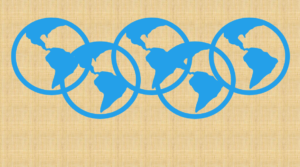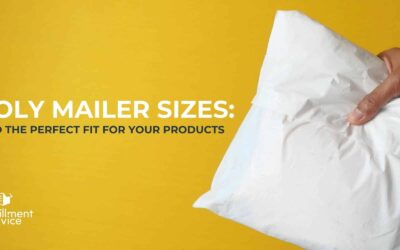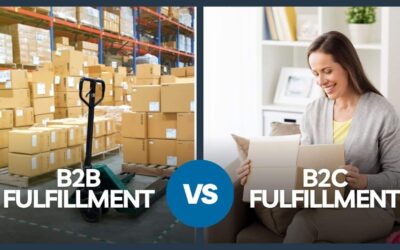If crowdfunders don’t plan ahead, these costs can tank an otherwise successful launch.
By Munish Gupta, founder & CEO of Supply Chain Advisory Group

Kickstarter and other crowdfunding sites have allowed early-stage product founders to get connected to a global audience of investors, allowing, entrepreneurs from all over the world to launch successful products and businesses. Once the campaign is completed, successful crowdfunders need to efficiently ship product globally to their backers and manage various international custom duties and tax regulations—at this point, it’s too late to discover international shipping costs, taxes and customs duties.
There are five primary logistics challenges to handle before launching a crowdfunding campaign globally, like a Kickstarter campaign. Failing to plan for any of these issues could dramatically affect product costs, and potentially turn a successful product into an underfunded launch.
1. Global product shipping: Most early stage founders spend a lot of time on product development, manufacturing, marketing, advertising and fundraising. Critical issues like shipping and warehousing take a backseat and are not considered that glamorous. However, not taking proper shipping costs into account can lead to huge losses on what would have otherwise been a successful campaign.
Founders need to accurately calculate their shipping costs for the product they’re offering before the campaign begins. Founders get backers all over the world and founders need to make sure they know which countries they are willing and able to ship to, and determine the cost for shipping product to those countries.
To accurately calculate shipping costs, founders need to look at the product weight and final box dimensions. The actual product sales price also influences the shipping method used. For example, if you’re selling a $200 product, then backers don’t mind paying $20 for an air shipment. However, if you’re selling a $20 product, then backers will complain about $20 air shipping cost and one needs to look at other cheaper options. Using a cheaper option often means more time in transit.
In many cases, founders manufacture the product in China and then ship it globally from a warehouse in China or Hong Kong. Based on Supply Chain Advisory Group experience, about 50% of the investments (orders) come from US-based customers.
Instead of sending individual shipments to backers in the US using FedEx, UPS etc. from Hong Kong, founders should consider putting bulk product on pallets and shipping it via ocean freight into the US. Once inventory is in the US, use a U.S. third party logistics (3PL) warehouse to store product. From the warehouse, the product can be sent to backers via ground service. This two-step strategy can lead to a dramatic cost lowering for product founders.
At Supply Chain Advisory Group, we routinely connect our clients with eFulfillment Service. They are a great fulfillment resource for crowdfunders looking to efficiently move product from manufacturers to backers.
Doing upfront due diligence and coming up with an accurate shipping cost, shipping options (air versus ocean), shipping carriers (DHL versus FedEx etc.) for different countries can save potential headaches down the line.
2. Dimensional weight in shipping: Dimensional weight or DIM weight comes into play when you ship large products. The basic concept is that the shipping company will charge you for the total size of the product instead of the weight of the product. A DIM weight factor is used to calculate the dimensional weight.
For example, if you are shipping a large, preassembled piece of furniture, you will most likely be paying DIM weight instead of the regular weight. DIM weight can be anywhere from 2x – 10x of the actual product weight and this can lead to astronomical shipping charges and huge losses for the founders. Entrepreneurs need to work up front with the shipping company to accurately calculate the DIM weight and the DIM factor used. The higher the DIM factor that you negotiate with the shipping company, the lower shipping charges you have to pay.
For more on dimensional weight or DIM weight, check out Online Sellers Guide to Dimensional Weight. https://www.efulfillmentservice.com/2015/03/online-sellers-guide-to-dimensional-weight/
3.Customs duties: In addition to shipping, crowdfunders should consider customs duties and tax considerations. It is important to note that taxes are different from duties and are discussed in the next section.
Each country has its own tariff and duty obligations, with different rates, rules, and forms. For example, a leather handbag might have only a 5% import duty in the United States but it might have a 30% import duty in Japan. In addition, because of the latest tariffs deployed by the Trump administration, most of the products imported into the United States have to pay an extra 25% import tariff.
Founders have two options here. Either they can deliver the product to the customer where all the duties, taxes and shipping are paid upfront and the customer just receives the product at the doorstep. This is called the total landed cost solution and, in Supply Chain Advisory Group’s experience, leads to a good customer experience.
Total landed cost is calculated by covering every factor in the product price and shipping and handling fees, beyond manufacturing expenses and including order value, shipping costs, cargo insurance costs, and all duties and taxes.
The other option is to let the backer pay for import duties and taxes. With this approach, the backer will get a note from the post office saying that the backer has to come to the post office to pay the taxes and duties and then get the product released. Obviously, it’s not as convenient as having the product arrive at the door. And it’s especially off-putting if one isn’t expecting to pay additional fees.
It is important that founders decide the customs strategy upfront and convey that to backers on the campaign page right at the onset.
Founders are strongly encouraged to not deliberately undervalue product value, or misdeclare one type of item as another in order to avoid paying a higher duty rate. There is a very high chance that customs will find out sooner or later, and you would be subject to very heavy penalties and fines.
4. Taxes: In addition to customs duties, a lot of countries enforce an import tax called VAT or GST. VAT and GST are similar in terms of the tax concept. The U.S. is one of the few countries that does not have VAT or GST and a lot of founders assume that other countries are the same. This assumption can lead to costly tax implications.
In addition, people use customs duties and taxes interchangeably but they are two different items. Customs duties vary based on product characteristics but VAT/GST tax rates are fixed and are calculated on the total value of the product imported into the country. The UK has a VAT rate of 20% and Australia has a GST rate of 10%.
You have to clarify to your backers upfront whether you would be responsible for VAT/GST using the landed cost solution or you will let the backer pay these taxes. For example, if a backer in the UK assumes that the shipping includes the 20% VAT and you had not figured that in, then you would have a 20% hit on your profit margins. Or, the backer would end up paying the additional 20%.
5. Product labeling and regulatory compliance: Different countries have different regulatory and labeling requirements. For example, Canada wants everything labeled in both French and English. In addition, child products might require special safety labeling in different countries. Electronics telecommunications products might require certifications such as Federal Communications Commission (FCC), Underwriters Laboratories (UL), Bluetooth SIG in the US and the Conformite Europeenne (CE) certification in the European Union, to name a few.
While it might become a nightmare for founders to take care of regulatory compliance in every individual country where they have backers, it is important to get the certification for at least US and Europe. US and Europe have very tight standards and these might be used in other countries. Without the appropriate labeling and certification, the customs authorities in the destination country might not let you import the product.
Global shipping, dimensional weight, customs, duty taxes and labeling and regulatory compliance are all small issues when considered in advance and woven into a strong crowdfunding campaign.
Get Help Answering Global Shipping & Compliance Issues
Does managing these challenges sound a bit intimidating and out of your comfort zone? Many crowdfunders let the experts handle supply chain challenges. Supply Chain Advisory Group can help you with all of the above-mentioned things and much more. We provide “end to end” services such as international entity set up (taxation, VAT, payroll etc.) regulatory compliance, customs clearance, transfer pricing, freight forwarding (ocean/air/truck/parcel freight), & overall global supply chain management.
Other Blogs, Services & Articles
Kickstarter vs. Indiegogo vs. Other Alternatives
What Trade Talks with China Mean to Ecommerce
Kickstarter Shipping Advice—5 Fulfillment Tips



